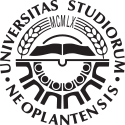| Course title |
Advanced Statistics |
| Acronym |
14PSPSO10 |
| Study programme |
Psychology |
| Module |
|
| Type of study |
first degree undergraduate academic studies |
| Lecturer (for classes) |
|
| Lecturer/Associate (for practice) |
|
| Lecturer/Associate (for OTC) |
|
| ESPB |
6.0 |
Status |
|
| Condition |
To attenting the course it is necessary for students to previously attend Introdaction to Statistics (14PSPSO04) course. |
Oblik uslovljenosti |
|
| The goal |
a) Introducing students:
- to complex statistical concepts, constructs, and operators which are used in psychology studies
- to complex statistical thinking necessary to understanding psychological phenomena and processes
b) Train students:
- to choose methods of statistical analyses
- to use statistical programs for statistical data analyses
- to understand multiple relations among variables as an assumption for studying multivariate analysis |
| The outcome |
At the end of this course, students are expected to be prepared:
- to choose adequate statistical methods for research plots which are frequently used in statistical investigations with larger number of variables and/or multiple measures
- to enter in computer data of typical psychological variables measurements and adjust them (by conversion or transformation) to the adequate model of statistical analysis
- to carry out data analyses in the specified statistical programs
- to interpret results of data analyses |

